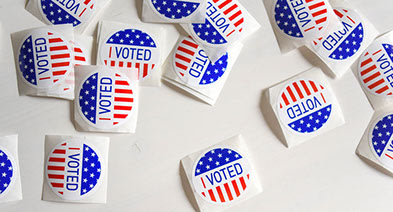
How To Win An Election Using Data
Everyone has heard of Cambridge Analytics and how they helped Trump become president and influenced the Brexit decision. As shocking as most people find this, it’s hard to comprehend ‘how’ they did it? The formula is actually relatively simple, and is almost exactly the same method that savvy digital advertisers use to manipulate you into buying the latest shoes, clothes, or Iphone. The difference is those same advertisers and data scientists are now being hired to influence and manipulate social causes, win elections, and much more.
So how?
Finding The Uncertain
The first step (and most important) is finding the people who are ‘uncertain’ on who they are voting for. If you try to manipulate people who are already voting one way, you are wasting precious time, and money. However, if you can reach and speak to the people who are uncertain about a candidate, cause, or policy you then can begin to speak to them with the messages you desire. But how do you find the perfect person that is unbiased and uncertain? You do this via a mix of statistical tools that scrape what people are searching for on the internet combined with a mix of good old fashioned user research to develop ‘personas’. Once you know who, where, why, what these personas are you can then begin to build strategies to target them.
Messaging
In conjunction with finding the right people you need to find the right messages to send them. The exact same process stated above is used to find the questions people are asking. Tools like Google Keyword Planner provide you with the data to do this. From here you begin to create data-driven content, this is the exact same method people use when creating content for SEO, but instead of having the end goal of wanting to rank on the first page of Google, the end goal is to create messages, and answer questions that you know the public wants answered. Data driven content is not solely for online purposes too, if we know that 40,000 people are all searching the same question in Google, it’s obvious that in a candidates next speech you would address this question in a manner to win over the public. Using data to inform and dictate content allows you to anticipate what the public wants so that you stay ahead of your competition.
Targeting
This is the easy bit. You know who you want to reach, so now all you have to do is target them on digital platforms. Facebook, Google, Amazon, Youtube and Bing all have granular targeting that any digital marketer worth their salt should be able to set-up with ease.
Test, Pivot, Update
This is where you can really make your mark. Closely monitor click through rate, and other engagement metrics, while testing multiple messages and content types all at the same time. What this does is allows you to find out what is working and resonating with each of the persona groups you have created. If a particular opinion or content resonates well, follow that same audience up with a new piece of content along similar lines, do this repeatedly and in 2-4 months this persona group will have only been receiving messages that put a specific candidate in a positive light. Remembering that these people have no current bias and are uncertain in their decision, after only seeing positive reasons why they should vote for a candidate and on topics that they care about, you will slowly begin to manipulate their decision.
So How Practical Is It To Do This In Reality?
Extremely practical. Whether you know it or not, every political party you support or follow will be doing this to some degree. It may be as basic as running Facebook advertising or it could be as complex as a full data-led strategy. The way elections are won have moved on from door knocking and billboards, you no longer have to speak to the masses, you can speak to each person individually at scale.
Summary
All of this sounds intimidating, invasive and confronting, but what consumers and businesses alike need to understand is this surgical approach of reaching people one to one at mass many times, is the exact same formula that advertisers use to manipulate you into buying products.


